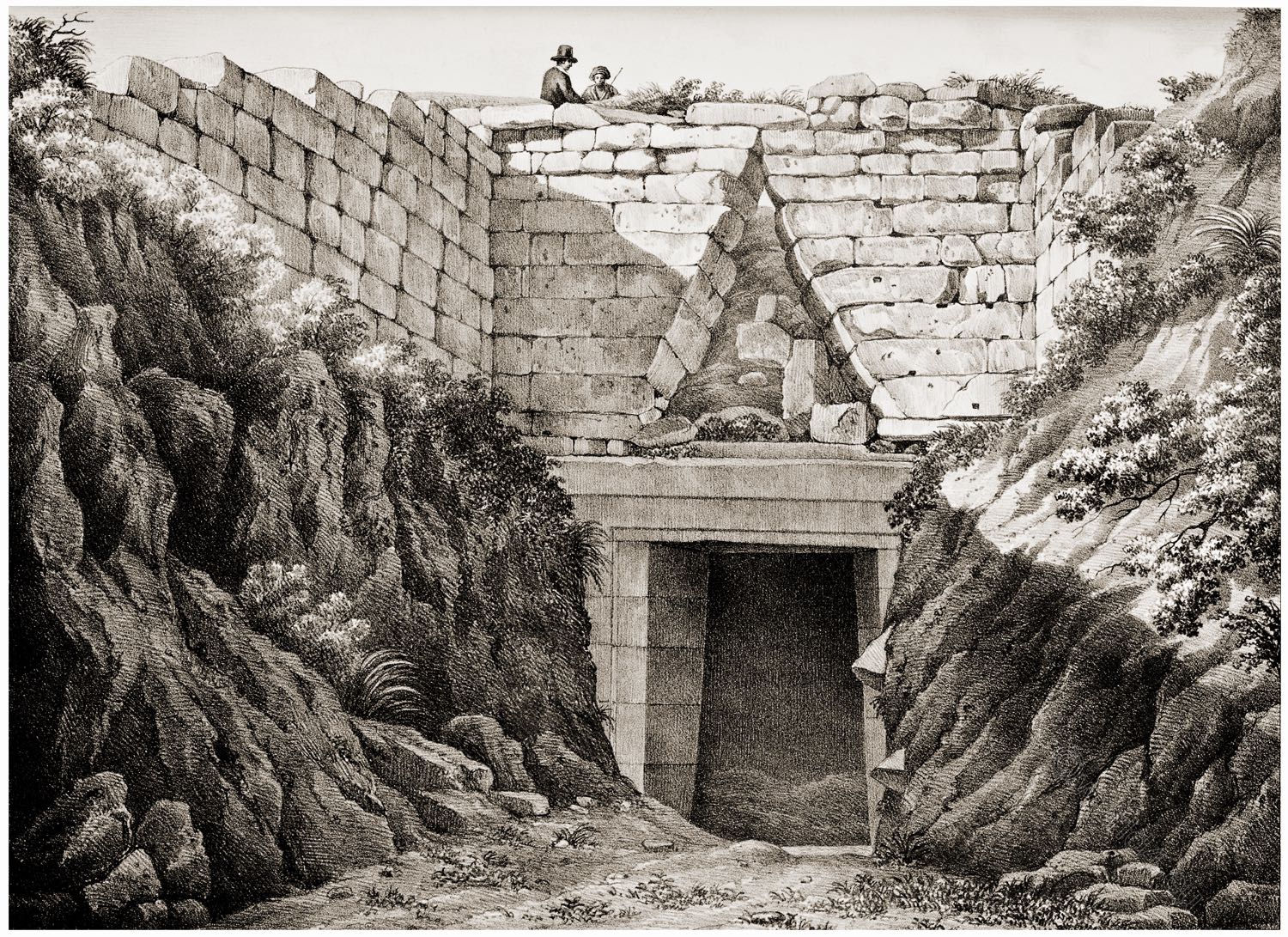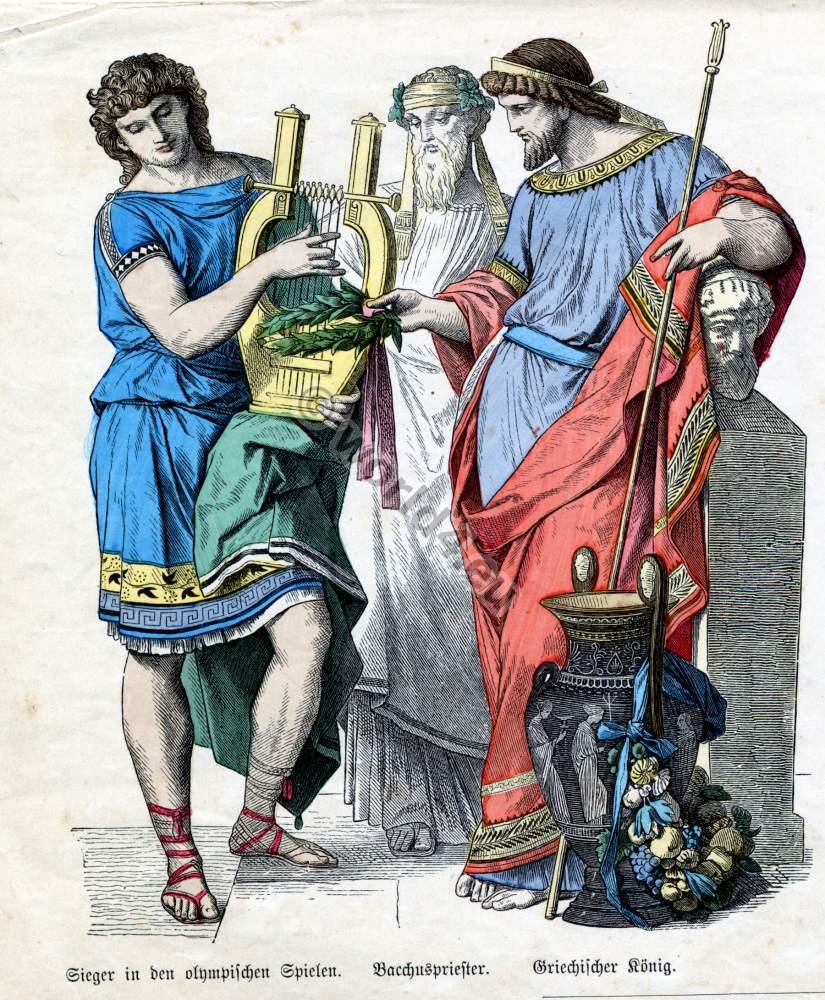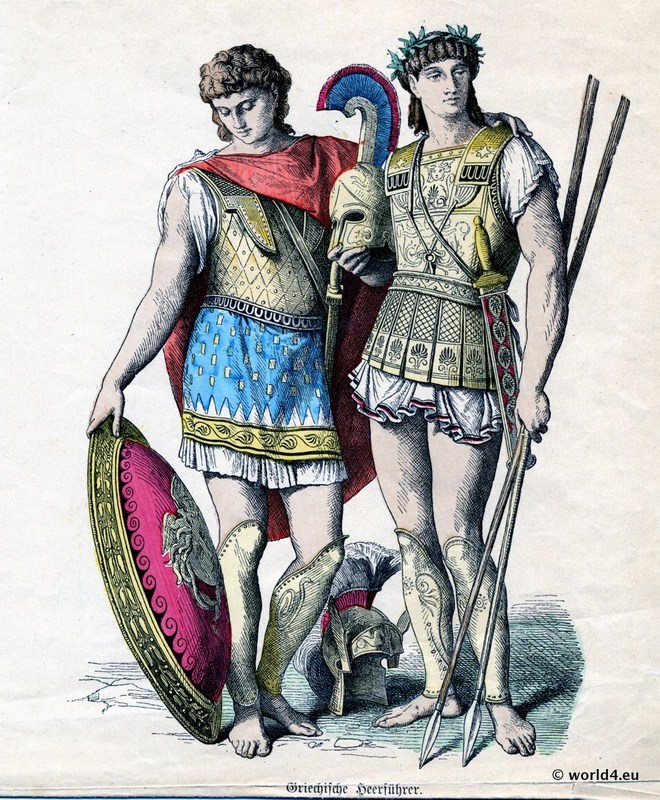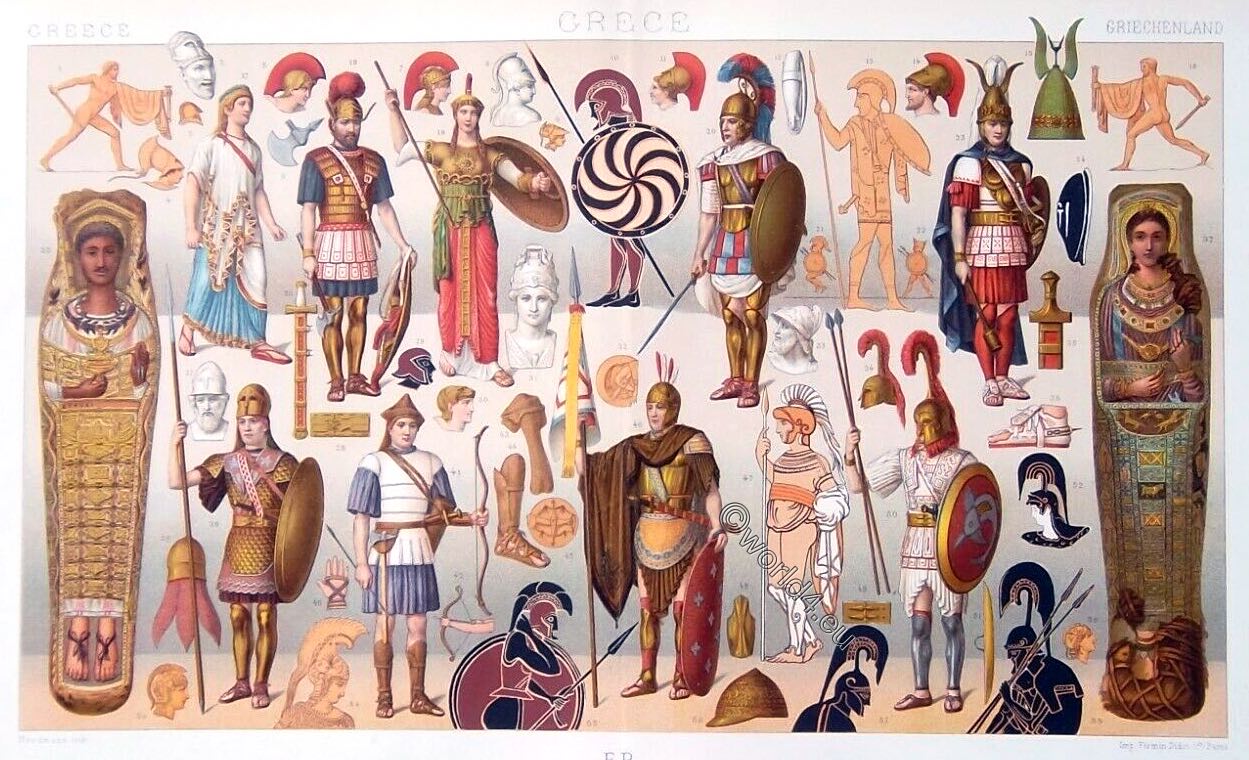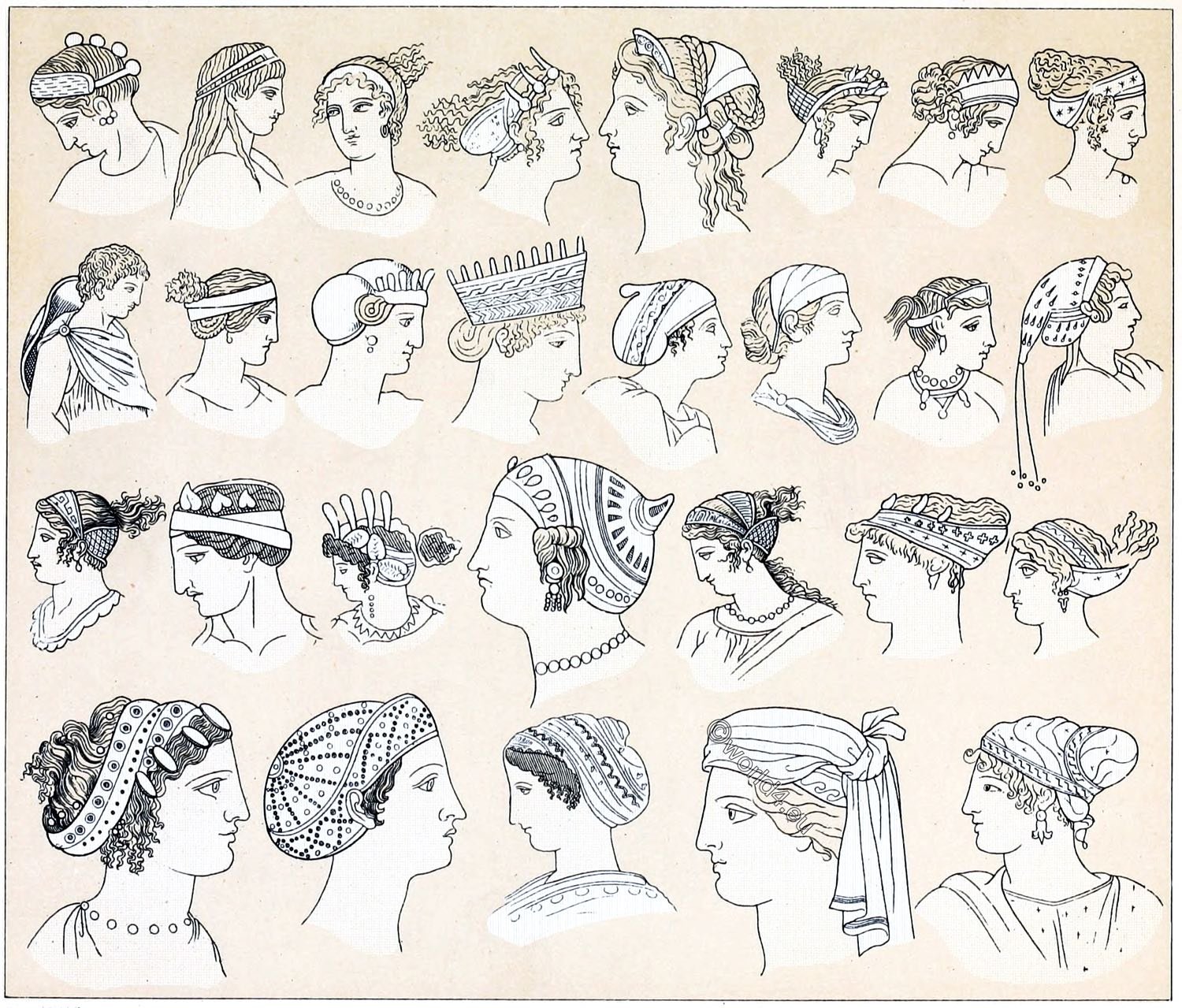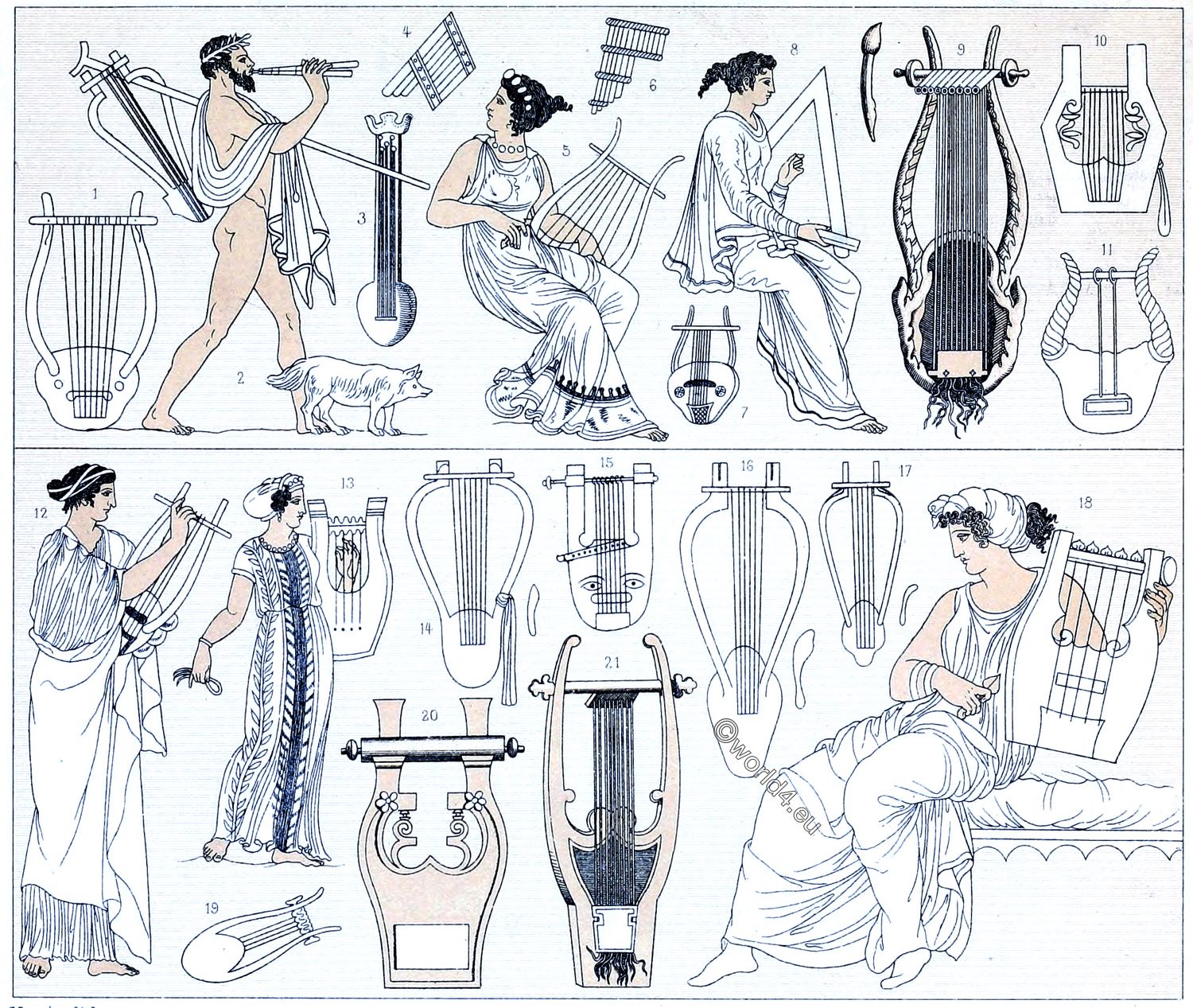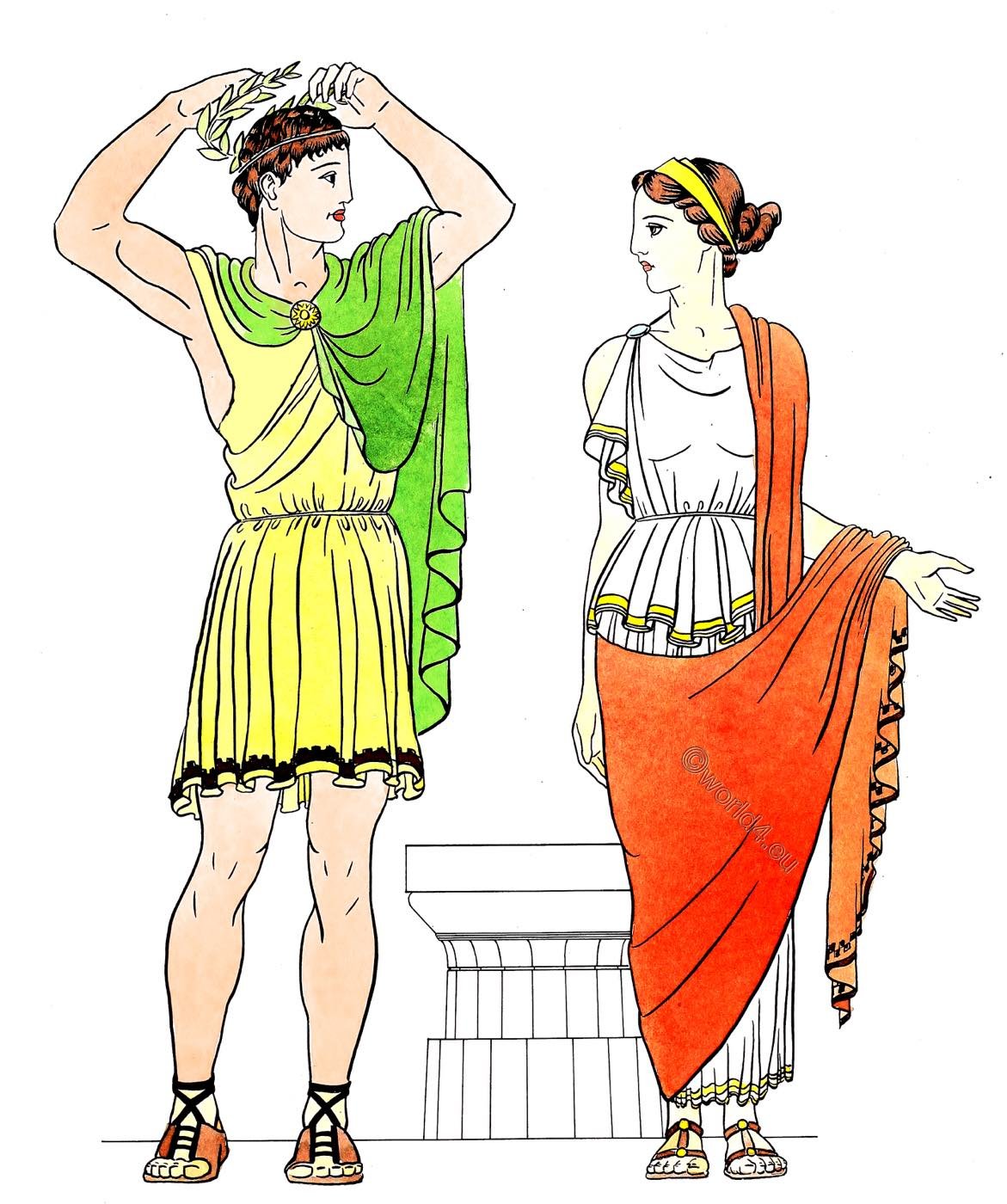
GREEK DORIC. 600 BC. – 400 BC.
PLATE Nr. 9
The two costumes shown here were worn during the so-called Golden Age of Greece. It carne a little earlier in development than the more elaborate Greek forms of dress. The young man is wearing the typical short hair dress of the Greeks. The hair has been cut rather short and bound around by a fillet (an ordinary string or band). This method of fastening was extremely popular; and, as the picture shows, a wreath made of leaves was some times added on special occasions.
He is wearing a short Doric chiton. In this case, it is a short square of linen that has been folded around the body and fastened on the left shoulder only. The remainder of the garment falls away, leaving the entire right arm and upper body bare. If you will notice, there is no overfold on this chiton. This form was called by the Greeks exomis, and was usually worn by athletes and young men engaged in active work. His cloak is the same as that on Plate 11. It was called a chlamys. It is short, made of wool or linen. The man in the picture has pinned it at the throat with a large brooch. When he lowers his arm the chlamys will fall behind. On his feet he is wearing a combination of shoe and sandal. It is made by fastening two leather sides to a sole, and is held on by a series of straps that tie around behind his ankle. The whole outfit is typical of the light, comfortable type of outfit worn by Greek athletes and young men in general.
The woman’s costume is almost exactly the same as that worn by the woman on Plate 8. Greek costume never changed very much. After the Doric and Ionic chiton are described, there is not much more to say. This woman has long hair which she has knotted carelessly on the back of the head. She is holding it in place by a band of material that has been folded in such fashion that it narrows from the front to a thin strip where it is tied under the knot of hair. Her dress is the simple Doric chiton without much of a pouch and with a rather long overfold. She has thrown a large rectangular shawl over her left shoulder, pulled it around her back under her right arm, and thrown it over her left wrist. Her sandals are simple leather soles held on by straps that have been arranged to keep the sandal from falling off when she walks.
You will notice, from the Doric column in front of which they are standing, how closely the simple, open, unelaborated costume blends with the earlier Greek architecture. This connection between architecture and clothes will bear studying all through the history of costume.
Source: Museum Extension Project. History of Costume.
Related
Discover more from World4 Costume Culture History
Subscribe to get the latest posts sent to your email.

